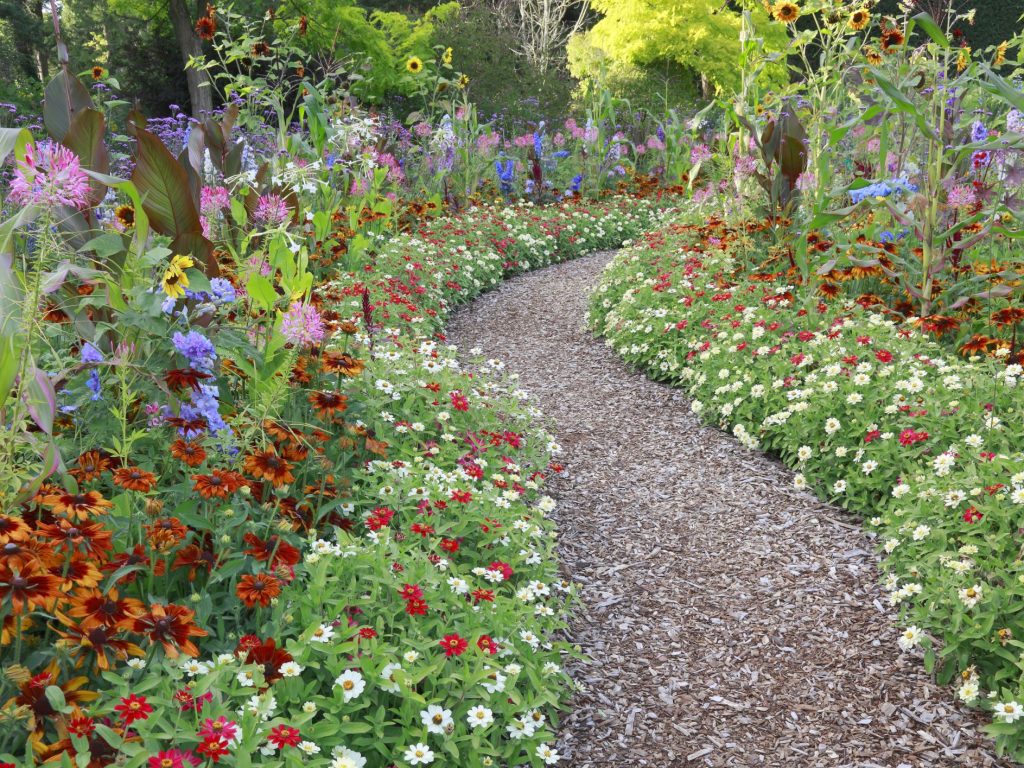Create a decorative garden pathway

Pathways are often left until last in the overall design of a garden, and as such, end up as functional elements of the design instead of the decorative elements that they can so easily become.
By using unusual materials that blend in naturally with the surrounds, you can create a pathway that is an attractive feature in its own right.
Your garden path need not be a simple strip of concrete – by using unusual materials that blend in naturally with the surrounds, you can create a pathway that is an attractive feature in its own right – one that is not only functional, but beautiful as well.
Using bricks
Bricks are a natural alternative to concrete, being both easy to lay and exceptionally durable. They are available as special paving bricks, as regular building bricks, or if you are working on a tight budget, you can also use damaged stock bricks, which are comparatively very affordable. Bricks come in many colours and textures, which can blend in with almost any architectural style and landscape design.
Paving stones
Unlike bricks, paving stones are usually fairly neutral or pastel-coloured. To make the most of their special appeal, they should be laid in interesting patterns. They are the ideal paving material for small and large gardens and patios, as they are exceptionally easy to lay. Using grass or other groundcover as a filler between staggered slabs is a particularly effective way of breaking up what might otherwise be a cold expanse of neutral-toned paving in a small area.
Wooden paths
Deep wooden beams, such as railway sleepers for example, can be used as an effective and extremely attractive material for garden paths. They are even simpler to lay than bricks. As long as the wooden beams are thoroughly soaked in preservative before they are laid, a properly designed pathway can endure decades of wear and tear. The ideal bedding material for wooden beams comprises spread gravel or small pebbles.
Well seasoned old wooden beams can be embedded in such material either by digging deep grooves in an existing sweep of stones or by laying the wood on the bare ground and then infilling with carefully upgraded pebbles to pack down the beams tightly against each other. Vary the lengths of each slat to get a ragged edge to the path and add that characteristically rustic, weathered look.
Wooden paths age very differently from brick or concrete varieties, developing a thin covering of moss and lichen. Although this can often add to their charm, such growths should be cleared from the path as it can make the wood slippery in wet or humid weather. Mossy borders on the other hand can look delightful.
Pebbles, stones and mosaics
Beds of pebbles are an easy way to cover large areas of ground for pathways or in areas where plants or grass just won’t grow, such as in very shady areas for example. Pebbles graded according to size and colour can be bought from specialist garden centres and sometimes from builder’s suppliers.
Rough stone paths have an old-fashioned, country feel and lend an air of age and maturity to any garden.
If you have the patience, a mosaic path made from finely graded pebbles can look very attractive, and almost Mediterranean or Mexican in style. The small pebbles should be embedded in a screed of wet concrete and it is important to choose each stone carefully – setting it against its neighbours so that an even surface is produced overall.
A rough stone path is not easy to lay as it might appear – the stones are available from quarries and specialist suppliers, but you need to choose each stone very carefully, looking for a flat surface that can be laid uppermost. When they are laid, each slab must butt as closely as possible with the stones around it and the whole surface must be as level as possible.
Properly laid, however, rough stone paths look very attractive and are particularly well suited for full and luscious gardens. They have an old-fashioned, country feel and lend an air of age and maturity to any garden, however small. –
Author: Antonella Desi, The Line Communications


Sorry, the comment form is closed at this time.